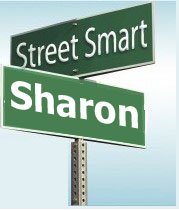Paul Haskell, Chair of the Sharon Selectboard was a part of a group discussion on how to use digital mapping and crowd-sourcing tools to solve community problems convened by the Vermont Digital Economy Project. Stay tuned for additional stories of organizations using mapping tools and crowd sourced information to further their missions.

(SHARON, VT) Like many Vermont towns, highway records are a hodgepodge of handwritten notes mixed with detailed spreadsheets. Some culverts are referenced to long-vanished landmarks while others are hand-drawn on loose-leaf paper with an orange crayon. Over the years road names and class designations have changed. Even the task of locating hundreds of street signs – all of which must be updated to comply with new federal regs – relied more on memory than hard records.
When the road foreman offered to take an afternoon to drive the roads with a clipboard and a GPS finder, the selectboard wondered if a step-by-step approach (literally speaking) wouldn’t be more productive. “With detailed descriptions of surface conditions plus the surrounding terrain, it would easier to identify where major drainage projects or trimming a thick overhead canopy could alleviate recurring mud or episodic washouts,” said selectboard chair Paul Haskell. A digitized map of highway infrastructure could then be overlain with E911, lot line, and other data for a variety of uses.
Driving the roads clipboard in hand seemed a clumsy, error-prone approach, but most electronic solutions were limited in scope or clunky to implement. Then Haskell connected with neighboring selectboard member Tig Tillinghast of Thetford. Over coffee, he offhandedly mentioned that his software design firm had just completed an application for foresters to inventory woodlots. The ForestMetrix app takes advantage of the iPad Mini’s onboard camera and GIS (Geographic Information System) to precisely capture detailed spatial information. Could that system be adapted to Sharon’s road inventory needs? Tillinghast and his business partner, Thetford selectboard chair Donn Downey quickly agreed to design and support a free beta version by the fall project.
At the same time, using freely available smartphone applications, the team will monitor the strength of cellular telephone and cellular data signals along every mile of these town roads. Knowing the precise location of such “dead zones” can be invaluable to emergency response personnel as well as wireless carriers.
Beyond a project of value to the town, students will earn credit toward TSA’s community service requirements and some may convert the experience into independent study projects or even into a senior thesis with a focus on civil engineering, community planning, or another discipline. Under the professional supervision of Two Rivers-Ottauquechee Regional Commission’s Senior Transportation Planner, Rita Seto, AICP, students will be exposed to a broad range of planning and engineering concepts and practices. The White River Partnership and state forestry experts will assist with an analysis of the spread of invasive plant species along the right-of-way as well as model policies and practices for the road crew and landowners.
Still, as selectboards know all too well, road conditions and their remedies are a matter of considerable personal opinion. Thus, perhaps the most compelling aspect of this project is giving objective data the personal touch. In the fall, the student teams will organize a series of “road parties” inviting neighbors to a Saturday afternoon barbeque to review findings about conditions along their road and to gather anecdotal evidence. These data will be incorporated in an additional layer for use in the next planning and prioritization steps.
Over the winter, working with the selectboard, road foreman, and planners from the regional commission, students will help assemble a detailed list of problems and priorities, develop plans and budgets, and present the first “street Smart” report at the March town meeting.
Beyond this initial phase, the town and Forest Metrix anticipate adapting the software so that from iPads mounted in each town truck, road crew will record ongoing maintenance and repair jobs that can sync with the master highway inventory and link directly into the town’s capital and cost accounting systems.
